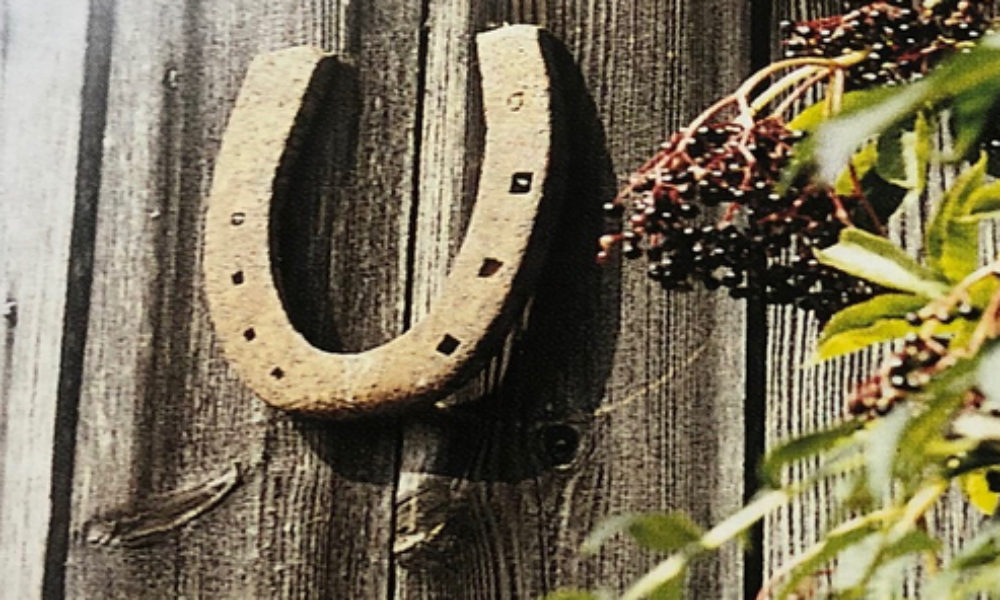
The history of the horseshoe and its power of protection and luck
The horseshoe has a long history, it was first made from plants and leather much like people made shoes and as man became more knowledgeable in alchemy a stronger horseshoe was developed to better protect the horse\’s feet. Man and horse formed an everlasting relationship, the horse is worshipped in many places and commands respect by its majesty and power.
What gives the horseshoe its reputation for luck
As communities and villages change the horse and the horseshoe have become a more rare sight. The Pagans believed the horseshoe brought prosperity as it was made from iron which was considered very valuable and you were thought to be \”lucky\” if you should find one. People then started to bring the horseshoes home with them and keep them believing them to attract luck. Iron as a metal is also considered a good conductor of esoteric energy, so a horseshoe that had been worn by a horse that fought in a war would be very powerful and strong, but so would a horseshoe that had been worn by a loyal, hardworking horse that ploughed the fields for the farmer and his family.
Maybe the most important energy would come from a horse that had been well cared for and loved. That is why it is important that the correct horseshoe is chosen as a charm or talisman.
The horseshoe would be nailed using only seven of the holes. Seven is thought to be a lucky number as it can only be divided by itself and one.
Documented cases of horseshoes being used for protection
It is recorded from 1500 into the mid-1800s that people would hang the horseshoe above their door so that a Witch could not enter.
\”A horseshoe nailed on the threshold of ye dore is yet in fashion: and nowhere more than in London: it ought (Mr Lilly sayes to be a horseshoe that one finds by chance on the Roade.\” (1968)
\” To secure yourself within doors against the enchantment of witches, especially if you are a person of fashion, and have never been taught the Lord\’s Prayer, the only method I know of is, to nail a horseshoe upon the threshold. This I can affirm to be of the greatest efficacy.\”(1813)
The shape of the horseshoe was a symbol related to the crescent moon which is linked to many goddesses. The crescent moon symbolises rebirth, fertility and protection. In order to en-power a horseshoe, it should be left outside in the light of a crescent moon. It can be placed directly on the Earth connecting it back to its roots.
Which way to hang a horseshoe
Which way to hang a horseshoe is widely debated but really it\’s what you believe in that matters as the intent impressed by you is what makes the impact. Hanging the horseshoe so the prongs point up is believed to hold the luck like a cup holds water but if tipped down the water and luck will fall out. You could hang the horseshoe upside down above the threshold so that good luck pours down on all who enter the home. Many Blacksmiths hang a horseshoe with the prongs pointing down above their firepits so that the luck and talent from the horse that wore the shoe would pour into the new horseshoes the Blacksmith would forge making horseshoes from champion horses very valuable.
How the horseshoe became a talisman of protection
The horseshoe in its primary purpose is to protect the horse\’s foot, it is not so far of a leap for the protection to extend to ourselves and homes. The most common story of the horseshoe and why it is hung above the door can be heard worldwide with few variations. One variation is the Blacksmiths name, however, it is always told that the Blacksmith acquires a reputation for forging the greatest horseshoes and the horses that were the shoes can run faster and work harder than any other horse. The Devil hearing this decided to give the Blacksmith the task of making him two horseshoes to that he could be more productive in his evil. The Blacksmith does make the horseshoes and the variations all describe how the horseshoes cause the Devil great pain because they are intentionally made too small or again intentionally fitted by the blacksmith in such a way to cause great pain. The Devil, now at the blacksmith\’s mercy agrees upon the deal that he will not bother those protected by the horseshoe or he will be reminded of the great pain. From then on people would hang the horseshoe above their door to protect them from evil.

